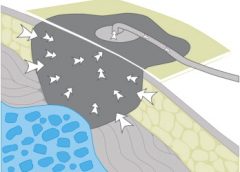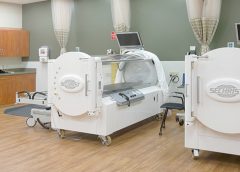Search Results for: For
Amniotic membrane wound graft is effective for difficult-to-treat ulcerations
Developing a successful program for wound care in the home
By Stanley A. Rynkiewicz III, MSN, RN, WCC, DWC, CCS
Developing a successful wound care program requires a strong commitment and a willingness to learn. Our experience with creating such a program at Deer Meadows Home Health and Support Services, LLC (DMHHSS), a nonprofit home-care facility in Philadelphia, Pennsylvania, may help others build a similar wound care program and reap the rewards of a more confident staff as well as improved patient outcomes. (more…)
Read MoreAn easy tool for tracking pressure ulcer data
By David L. Johnson, NHA, RAC-CT
As a senior quality improvement specialist with IPRO, the Quality Improvement Organization for New York State over the past 11 years, I’ve been tasked with helping skilled nursing facilities (SNFs) embrace the process of continuous quality improvement. A necessary component of this effort has been to collect, understand, and analyze timely and accurate data. This article discusses a free tool I developed to help SNFs track their data related to pressure ulcers and focus their quality improvement efforts for the greatest impact. (more…)
Read MoreWhen should we take “No” for an answer?
By: Donna Sardina, RN, MHA, WCC, CWCMS, DWC, OMS
Have you ever had a patient yell “Get out of my room!” or “Don’t touch me! I don’t want to be turned”? How about “No! Don’t put those compression stockings on my legs!” or “No, I’m not going to wear those ugly orthopedic shoes!” or “No way. I can’t stay in bed. I have to go to Bingo!”?
As clinicians, our first instinct usually is paternalistic, as if we’re the patient’s parent who knows what’s best for our child. We think, “Sorry, but you have to do this. It’s for your own good.” And we convey that idea to the patient. (more…)
Read MoreEducation vital for successful wound management in the home
By Judy Bearden, MSN/ED, RN
Changes in healthcare policy and reimbursement are pushing treatment from the hospital to the community. This shift is likely to result in a higher number of complex wounds being treated in the home, which can create stress for patients and families. Education plays a key role in reducing this stress. This article focuses on education for family members or friends who are caregivers for the patient. (more…)
Read MoreHow to love and care for yourself unconditionally
By Yolanda G. Smith, MSN, RN, CCRN
Are you able to relax, have fun, and enjoy the simple pleasures of life? Or do you:
- have trouble falling or staying asleep?
- smoke, drink, or eat to reduce tension?
- have headaches, back pain, or stomach problems?
- get irritated or upset over insignificant things?
- have too much to do and too little time to do it?
Understanding Aspirin’s effect on wound healing offers hope for treating chronic wounds
Home-based exercise programs ‘improve mobility for PAD patients’
Minor foot wounds a major threat for diabetics
Guidelines for safe negative-pressure wound therapy
By Ron Rock MSN, RN, ACNS-BC
Since its introduction almost 20 years ago, negative-pressure wound therapy (NPWT) has become a leading technology in the care and management of acute, chronic, dehisced, traumatic wounds; pressure ulcers; diabetic ulcers; orthopedic trauma; skin flaps; and grafts. NPWT applies controlled suction to a wound using a suction pump that delivers intermittent, continuous, or variable negative pressure evenly through a wound filler (foam or gauze). Drainage tubing adheres to an occlusive transparent dressing; drainage is removed through the tubing into a collection canister. NWPT increases local vascularity and oxygenation of the wound bed and reduces edema by removing wound fluid, exudate, and bacteria. (more…)
Read MoreMedicare reimbursement for hyperbaric oxygen therapy
By Carrie Carls, BSN, RN, CWOCN, CHRN, and Sherry Clayton, RHIA
In an atmosphere of changing reimbursement, it’s important to understand indications and utilization guidelines for healthcare services. Otherwise, facilities won’t receive appropriate reimbursement for provided services. This article focuses on Medicare reimbursement for hyperbaric oxygen therapy (HBOT). (See What is hyperbaric oxygen therapy?)
Indications and documentation requirements
Read More

